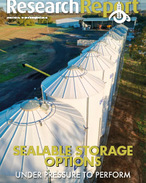This article is 7 years old. Images might not display.
“Soil moisture was low across Queensland and adjacent parts of north east New South Wales as well as parts of western Victoria and Tasmania,” the Australian Climate, Water and Agricultural said.
“However in contrast, it was well above average across southern New South Wales, eastern Victoria and much of the western half of Australia,” the report said.
“It was close to average across the remainder of the country.”
The report noted that in summer cropping regions, the soil moisture in the upper layer was extremely low for southern Queensland, and below average to average in northern New South Wales. Meanwhile it was average or above in southern New South Wales.
“Relative lower layer soil moisture for January was extremely low to well below average across much of Queensland, northern New South Wales, western Victoria, parts of eastern South Australia and eastern Northern Territory and much of Tasmania,” the ABARES report said.
Again it was a different story for the lower layer soil moisture was average to extremely high across most of Western Australia and Northern Territory and much of South Australia.
“Lower layer soil moisture was extremely low to well below average in cropping regions in Queensland and northern New South Wales, and below average in Victoria and eastern South Australia. It was average to well above average in southern New South Wales, western South Australian and Western Australian cropping regions,” the report said.
EL NIÑO UPDATE
ABARES said sea surface temperatures in the central tropical Pacific have warmed slightly since late December, with most models now forecasting that La Niña will end in the southern autumn.
During summer, La Niña normally brings above average rainfall to eastern Australia–particularly in northern New South Wales and Queensland.
Bureau of Meteorology said in its monthly ENSO (El Niño–Southern Oscillation) Wrap-Up rainfall outlooks for Australia suggest that the current La Niña is likely to have less influence on summer rainfall than previous stronger events, however, La Niña can also increase the likelihood of prolonged warm spells for south-eastern Australia.
WATER AVAILABILITY
For irrigators the water storage levels in the Murray–Darling Basin (MDB) decreased during the week ending 1 February 2018 by 379 gigalitres (GL) to 13,717 GL and are at 61 per cent of total capacity.
“This is 17 percentage points or 3,784 GL less than at the same time last year,” the ABARES update said,
“Allocation prices in the southern Murray–Darling Basin increased in the week ending 1 February 2018 to $109 per megalitre, an increase of $3 from the same time last week,” it said.























